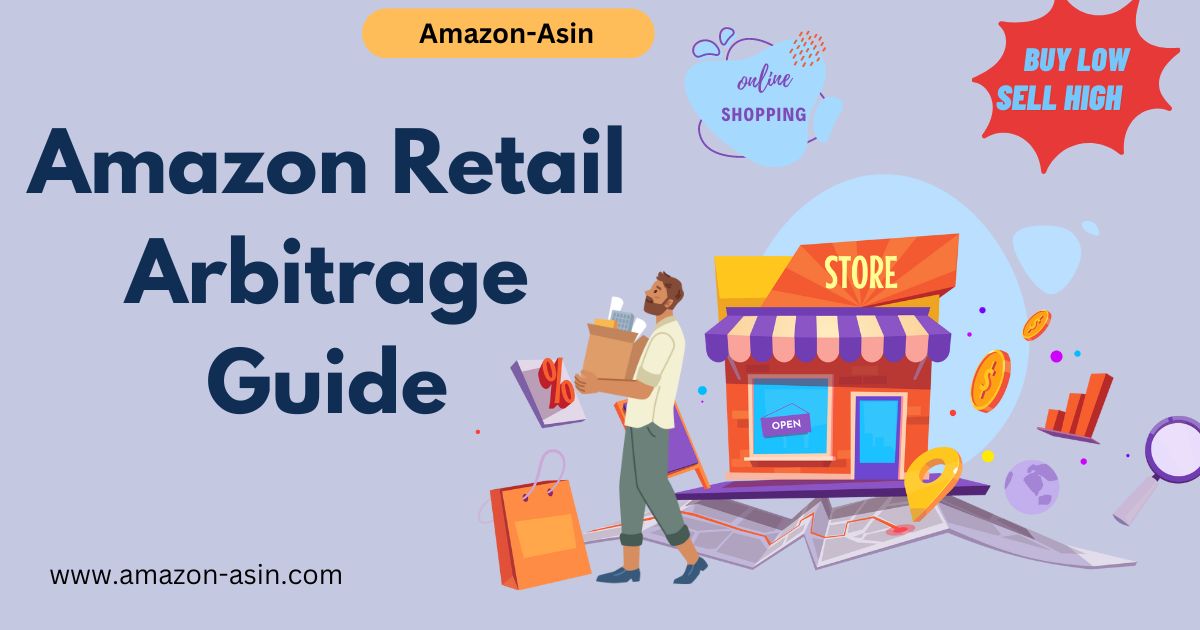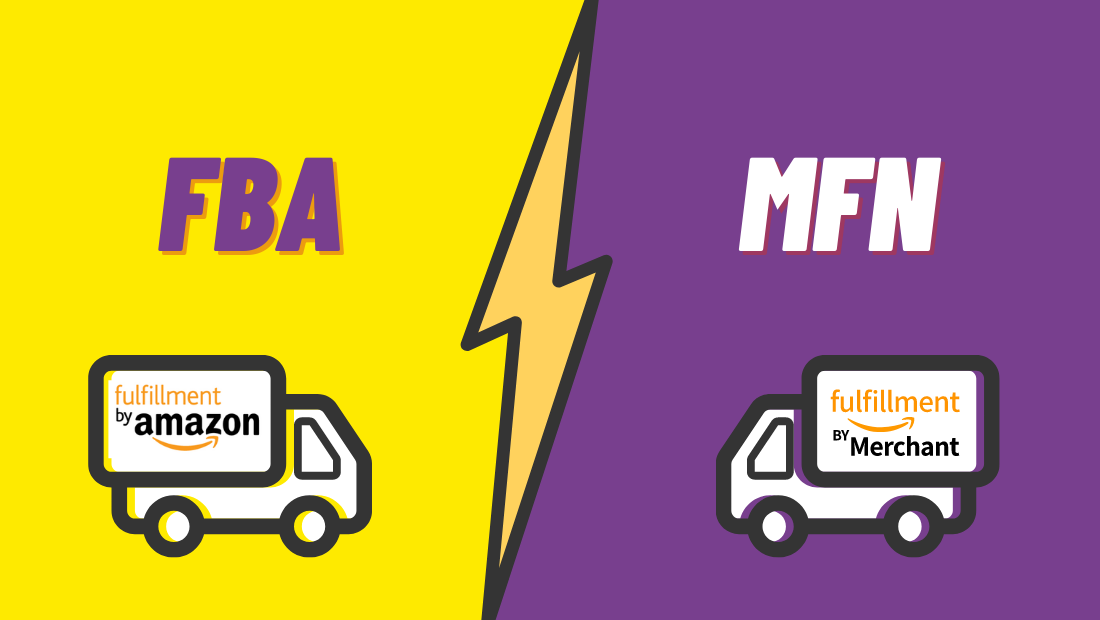Amazon retail arbitrage is a dynamic and entrepreneurial strategy that involves finding undervalued or discounted products from various retail sources and then reselling them on Amazon’s online marketplace at a higher price, thereby capturing the price difference as profit. This method leverages the disparities in pricing across different platforms and takes advantage of Amazon’s immense customer base and efficient fulfillment network.
Quick Guide
- What is Retail Arbitrage?
- Explanation of Amazon Retail Arbitrage
- How Amazon Retail Arbitrage Works
- The Legality of Amazon Retail Arbitrage
- Getting Started with Amazon Retail Arbitrage
- Selling on Amazon through Retail Arbitrage
- Navigating Challenges and Changes in Amazon Retail Arbitrage
- Current Status of Retail Arbitrage on Amazon
- Conclusion
What is Retail Arbitrage?
Retail arbitrage is a commerce strategy where individuals or businesses buy products from one retail source at a lower price and then resell them at a higher price through another retail channel, capitalizing on the price difference. In the context of Amazon, retail arbitrage involves purchasing products from various retail stores, clearance sales, discount outlets, or online platforms and subsequently listing and selling them on Amazon’s marketplace for a profit.
The core concept of retail arbitrage revolves around exploiting market inefficiencies, pricing disparities, and supply and demand variations between different retail environments. It requires a sharp eye for deals, an understanding of product values, and the ability to quickly assess whether a product can be resold at a higher price on a different platform.
Explanation of Amazon Retail Arbitrage
Amazon retail arbitrage is a method in which individuals or sellers purchase products from retail stores, clearance sections, discount outlets, or online platforms at a lower price and then resell them on Amazon’s marketplace at a higher price, aiming to profit from the price difference. This practice leverages disparities in pricing across different marketplaces and relies on Amazon’s vast customer base and efficient fulfillment services.
Benefits and Drawbacks
Benefits
Low Barrier to Entry: Retail arbitrage allows newcomers to enter e-commerce without creating their products.
Flexible: It can be part-time or full-time, offering a flexible work schedule.
Quick Cash Flow: Successful sales can generate relatively quick cash flow, enabling reinvestment in more products.
Market Testing: It provides a way to test product demand and pricing strategies without substantial investment.
Utilizes Amazon’s Infrastructure: Amazon’s FBA service streamlines fulfillment and provides access to Prime customers.
Drawbacks
Competition: As more sellers adopt this strategy, competition increases, potentially leading to price wars and reduced profit margins.
Limited Margins: Amazon’s fees, shipping costs, and other expenses can reduce potential profits.
Sourcing Challenges: Finding profitable products consistently requires time and effort, especially as more people engage in arbitrage.
Risk of Account Suspension: Violating Amazon’s policies can result in account suspension or closure.
Ethical Concerns: Buying out clearance sections or misrepresenting product values can raise ethical considerations.
Factors Influencing Profitability
Product Demand: Products with high demand and limited competition are more likely to yield better profits.
Price Discrepancy: The larger the price difference between the potential selling price and the purchase price on Amazon, the higher the potential profit.
Amazon Fees: Seller fees, referral fees, and fulfillment fees directly impact profit margins.
Shipping Costs: Shipping costs to Amazon’s fulfillment centers must be factored in.
Fulfillment Method: Utilizing FBA can lead to higher sales due to Prime eligibility, but it comes with associated fees.
Market Research: Thorough research on product sales ranks, historical prices, and competitor pricing is crucial.
Seasonality: Some products may have varying demands based on seasons or trends.
Product Condition: The condition of products affects their resale value and potential profit.
Sourcing Skills: The ability to consistently find undervalued products is a key skill.
Listing Quality: Effective product titles, descriptions, and images can impact sales.
To assess your listing quality, you have the option to utilize a third-party tool such as SellerApp Amazon listing quality check.

How Amazon Retail Arbitrage Works
Amazon retail arbitrage is a process that involves several steps, from sourcing products to listing them on Amazon’s marketplace and managing fulfillment. Here’s how it typically works:
Sourcing Products from Various Retail Sources
Arbitrageurs search for products that can be purchased at a lower price from different retail sources. These sources include physical stores, clearance sales, discount outlets, thrift shops, and even online marketplaces other than Amazon. The goal is to find products with a price difference between what they can be bought for and what they can be sold on Amazon.
Identifying Profitable Products Using Price Disparities
Arbitrageurs evaluate the potential profitability of each product by comparing its purchase price with the expected selling price on Amazon. They consider factors such as Amazon’s fees (referral fees, fulfillment fees, etc.), shipping costs, and any other relevant expenses. The products chosen for resale should have a significant enough price disparity to cover these costs and still yield a profit.
Listing Products on Amazon Marketplace
Once suitable products are identified, arbitrageurs create product listings on Amazon’s marketplace. This involves writing compelling product titles, and descriptions, and adding high-quality images. They also set the selling price, considering Amazon’s fees and competitor prices. Effective product listings are crucial for attracting potential customers.
Handling Fulfillment Options: FBA (Fulfillment by Amazon) vs. FBM (Fulfillment by Merchant):
Arbitrageurs have two main options for fulfilling orders:
Fulfillment by Amazon (FBA)
With FBA, sellers ship their purchased products to Amazon’s fulfillment centers. Amazon then handles storage, packaging, shipping, and customer service. FBA provides Prime eligibility for products, potentially boosting sales due to the enhanced customer experience.
Fulfillment by Merchant (FBM)
With FBM, sellers handle the fulfillment process themselves. They store, package, and ship the products to customers when orders are placed. While FBM gives sellers more control over the process, it might not offer the same level of convenience and customer trust as FBA.
Benefits of FBA
Prime Eligibility: FBA products are often eligible for Prime shipping, attracting more customers.
Customer Trust: Amazon’s reliable fulfillment process builds trust with buyers.
Time Savings: Sellers don’t have to manage packaging and shipping themselves.
Benefits of FBM
More Control: Sellers have direct control over the fulfillment process.
Cost Savings: FBM might involve lower fulfillment fees compared to FBA.
The Legality of Amazon Retail Arbitrage
Amazon retail arbitrage, in itself, is generally legal. It involves purchasing products at retail prices from various sources and reselling them on Amazon’s marketplace. This practice is based on the principles of supply and demand, and it leverages price differences between different markets. However, there are certain legal and ethical considerations that sellers engaging in retail arbitrage should be aware of:
Reselling Products: Reselling products that you have legally acquired is usually permitted. However, you should ensure that you have the legal right to sell the products you acquire and comply with applicable laws and regulations.
Trademark and Copyright Issues: Be cautious when reselling branded products. Selling counterfeit or unauthorized products that infringe on trademarks or copyrights can lead to legal consequences.
Product Authenticity: Selling counterfeit or fake products is illegal and can have severe legal consequences. It’s important to ensure that the products you source are genuine.
Product Quality and Safety: If the products you source are unsafe or meet quality standards, you could be held liable for any harm or damages caused to consumers. Research the products you source to ensure they meet safety regulations.
Misrepresentation: Accurately describing the condition of the products and providing accurate information in your listings is crucial. Misleading customers can lead to legal issues.
Potential Issues to Be Aware Of
Restricted Products: Amazon has restrictions on certain products, such as hazardous materials, regulated items, and products with specific requirements. Attempting to sell restricted products without the necessary permissions can result in account suspension.
Counterfeit Concerns: Selling counterfeit or fake products is illegal and can result in legal actions from the brand owner and Amazon. Thoroughly research the authenticity of the products you source.
Listing Accuracy: Providing accurate and truthful information in your product listings is crucial. Misrepresenting products or making false claims can lead to legal and reputation issues.
Intellectual Property: Be cautious when dealing with branded products. Selling products that infringe on trademarks or copyrights can result in legal action.
Product Liability: If the products you sell are unsafe or cause harm to consumers, you could be held liable. Ensure the products you source meet safety standards.
Amazon’s Policies: Familiarize yourself with Amazon’s policies and guidelines for selling. Violating these policies can lead to account suspension or closure.
Getting Started with Amazon Retail Arbitrage
Researching Profitable Product Categories
Start by researching and identifying product categories that have demand on Amazon. Look for products with consistent sales and a healthy profit margin. Tools like Amazon’s Best Sellers Rank (BSR) can give you insights into the popularity of products within different categories.
Finding Retail Stores with Potential Deals
Visit physical retail stores, clearance sections, discount outlets, thrift shops, and online marketplaces to find products priced lower than their potential selling price on Amazon. Look for deals, promotions, and products with significant price disparities.
Evaluating Product Price History and Sales Rank
Use tools like SellerApp, CamelCamelCamel, or Keepa to track the historical price trends of products on Amazon. This will help you determine if the current price is higher or lower than the typical selling price. Additionally, consider the sales rank of a product – lower ranks indicate higher sales volume.
Calculating Potential Profit Margins
Calculate your potential profit margins by subtracting the cost of acquiring the product (including taxes, shipping, and other fees) from the expected selling price on Amazon. Be sure to account for Amazon’s fees (referral fees, fulfillment fees, etc.), shipping costs, and other relevant expenses.
Initial Investment Considerations
Determine how much capital you’re willing to invest in your initial inventory. Start small to minimize risks while you learn the ropes. As you gain experience and confidence, you can gradually increase your investment.
Sourcing and Listing
Once you’ve identified profitable products, purchase them from retail stores or other sources. Create compelling product listings on Amazon, optimizing titles, descriptions, and images. Consider the costs you’ve calculated, and ensure your prices are competitive yet profitable.
Fulfillment Method
Decide whether to use Fulfillment by Amazon (FBA) or Fulfillment by Merchant (FBM). FBA offers convenience and Prime eligibility, while FBM gives you more control over the process. Choose a strategy that works with the resources and goals of your company.
Monitor and Adjust
Regularly monitor your product listings, sales, and profit margins. Adjust your strategies based on market trends and customer feedback. Continuously research new products and stay updated on Amazon’s policies and changes.
Scaling and Learning
As you gain experience and confidence, consider scaling your operations by sourcing more products and optimizing your processes. Learn from your successes and failures, adapting your strategies to maximize profitability.
Legal and Ethical Considerations
Ensure that the products you’re sourcing and selling are authentic and legal. Adhere to Amazon’s policies and guidelines to avoid account suspension. Maintain transparent and accurate product listings to provide a positive customer experience.
Remember that Amazon retail arbitrage involves risks and uncertainties. It’s important to approach it as a learning process and be prepared to adapt your strategies as you gain experience and insights into the market.
Selling on Amazon through Retail Arbitrage
Setting Up a Seller Account on Amazon
- Go to Amazon Seller Central (sellercentral.amazon.com) and create a new account.
- Choose between an Individual Seller account (per-item fee) or a Professional Seller account (monthly subscription with additional features).
- Follow the on-screen instructions to provide the necessary information, including contact details and payment methods.
Creating Product Listings
- In your Seller Central dashboard, navigate to the “Inventory” tab and select “Add a Product.”
- Search for the product you want to sell. If it’s not already listed, you can create a new listing by selecting “Create a new product listing.”
- Provide accurate product information, including title, brand, manufacturer, UPC or EAN, and product features.
Optimizing Product Titles, Descriptions, and Images
- Product Title: Craft a concise and informative title that includes relevant keywords. Put the most important details at the beginning of the title.
- Product Description: Write a clear and compelling product description that highlights the product’s features, benefits, and uses. Use bullet points for easy readability.
- Product Images: Include high-quality images that showcase the product from different angles. Use white backgrounds and follow Amazon’s image guidelines.
Pricing Strategies to Maximize Sales and Profits
- Competitor Research: Study the prices of similar products to understand the competitive landscape.
- Consider Costs: Factor in your acquisition cost, Amazon’s fees (referral fees, fulfillment fees), shipping costs, and other expenses.
- Pricing Strategy: Choose competitive pricing (similar or slightly lower than competitors) or premium pricing (if you can differentiate your product).
- Dynamic Pricing: Use pricing tools that can automatically adjust your prices based on market conditions and competitors’ prices.
- Promotions and Discounts: Run limited-time promotions or offer quantity discounts to attract customers.
Fulfillment Method
- Decide whether to use Fulfillment by Amazon (FBA) or Fulfillment by Merchant (FBM).
- FBA: Amazon handles storage, shipping, and customer service. Products are Prime eligible, which can lead to higher sales.
- FBM: You handle fulfillment and shipping. While you have more control, you might not have the same Prime benefits.
Monitoring and Adjusting
- Regularly monitor your product listings, sales performance, and customer reviews.
- Use Amazon’s Seller Central dashboard to track inventory levels and order processing.
- Make adjustments based on customer feedback and changes in market demand.
Navigating Challenges and Changes in Amazon Retail Arbitrage
Addressing Competition from Other Sellers
Competition is a common challenge in the world of Amazon FBA retail arbitrage. To effectively address competition:
Differentiation: Highlight unique features or benefits of your products in your listings to set them apart from competitors.
Bundling: Create product bundles that add value and make your listings more appealing.
Pricing Strategy: Continuously adjust your pricing strategy to stay competitive without sacrificing profit margins.
Quality and Customer Service: Provide exceptional customer service and ensure your products meet or exceed customer expectations.
Adapting to Amazon’s Policy Changes
Amazon frequently updates its policies, and staying informed is crucial to maintaining a successful retail arbitrage business:
Review Policies: Regularly check Amazon’s policy updates and guidelines to ensure compliance.
Be Proactive: Anticipate policy changes and adapt your strategies accordingly.
Educate Yourself: Understand the reasoning behind policy changes and how they might impact your business.
Monitoring Product Availability and Adjusting Listings
Product availability can change quickly due to demand, market trends, or supplier changes. To stay ahead:
Regular Inventory Checks: Monitor your inventory levels to avoid running out of stock.
Keep Listings Updated: Adjust your listings to reflect accurate stock availability.
Sourcing Alternatives: Be prepared to find new sources for products if your current supplier runs out of stock.
Seasonal Variations: Be aware of seasonal demand changes affecting product availability.
Staying Agile and Flexible
Retail arbitrage requires adaptability to navigate the evolving e-commerce landscape:
Market Trends: Monitor market trends to identify emerging product categories or niches.
New Opportunities: Explore new sourcing options and products to diversify your inventory.
Technology: Utilize software tools that help with product research, pricing, and monitoring.
Managing Reviews and Feedback
Positive customer reviews and feedback are essential for success on Amazon:
Customer Satisfaction: Prioritize customer satisfaction to generate positive reviews and build trust.
Responding to Reviews: Address negative reviews professionally and offer solutions when possible.
Product Quality: Ensure the products you sell are high quality to minimize negative feedback.
Building a Brand and Reputation
As you gain experience, consider moving beyond simple retail arbitrage and building a brand:
Private Labeling: Explore the possibility of private labeling products to establish your brand and reduce competition.
Quality Control: Maintain consistency in product quality to build a reputation for reliable products.
Long-Term Vision: Consider how your retail arbitrage efforts can evolve into a sustainable business model.
Current Status of Retail Arbitrage on Amazon
Retail arbitrage remained a legitimate practice on Amazon’s platform. Sellers could source products from various retail sources and resell them on Amazon’s marketplace. However, there were certain considerations and potential challenges to be aware of:
Amazon’s Policies
While retail arbitrage was generally allowed, sellers needed to adhere to Amazon’s policies and guidelines. Any violations, such as selling restricted or counterfeit products, could result in account suspension or closure.
Increasing Competition
Retail arbitrage faced increasing competition, making it important for sellers to find unique products, optimize their listings, and employ effective pricing strategies.
Brand Gating and Restrictions:
Amazon continued introducing brand gating and restrictions on certain products and brands. This meant that some brands or product categories required approval from Amazon before sellers could list them.
Evolving Marketplace
Amazon’s policies and marketplace dynamics were subject to change, so sellers needed to stay informed about policy updates and adapt their strategies accordingly.
Conclusion
Amazon retail arbitrage presents a dynamic and entrepreneurial opportunity for individuals to enter the e-commerce space without manufacturing or product creation complexities. By sourcing products from retail stores, clearance sales, and other outlets at lower prices and reselling them on Amazon’s platform, sellers can capitalize on price disparities and tap into Amazon’s vast customer base.
However, success in retail arbitrage requires careful planning, research, and adaptability. Each step demands attention to detail, from setting up your seller account to creating effective product listings, optimizing pricing strategies, and managing inventory. Additionally, staying compliant with Amazon’s policies, monitoring market trends, addressing competition, and providing excellent customer service are essential to sustaining a thriving retail arbitrage business.




